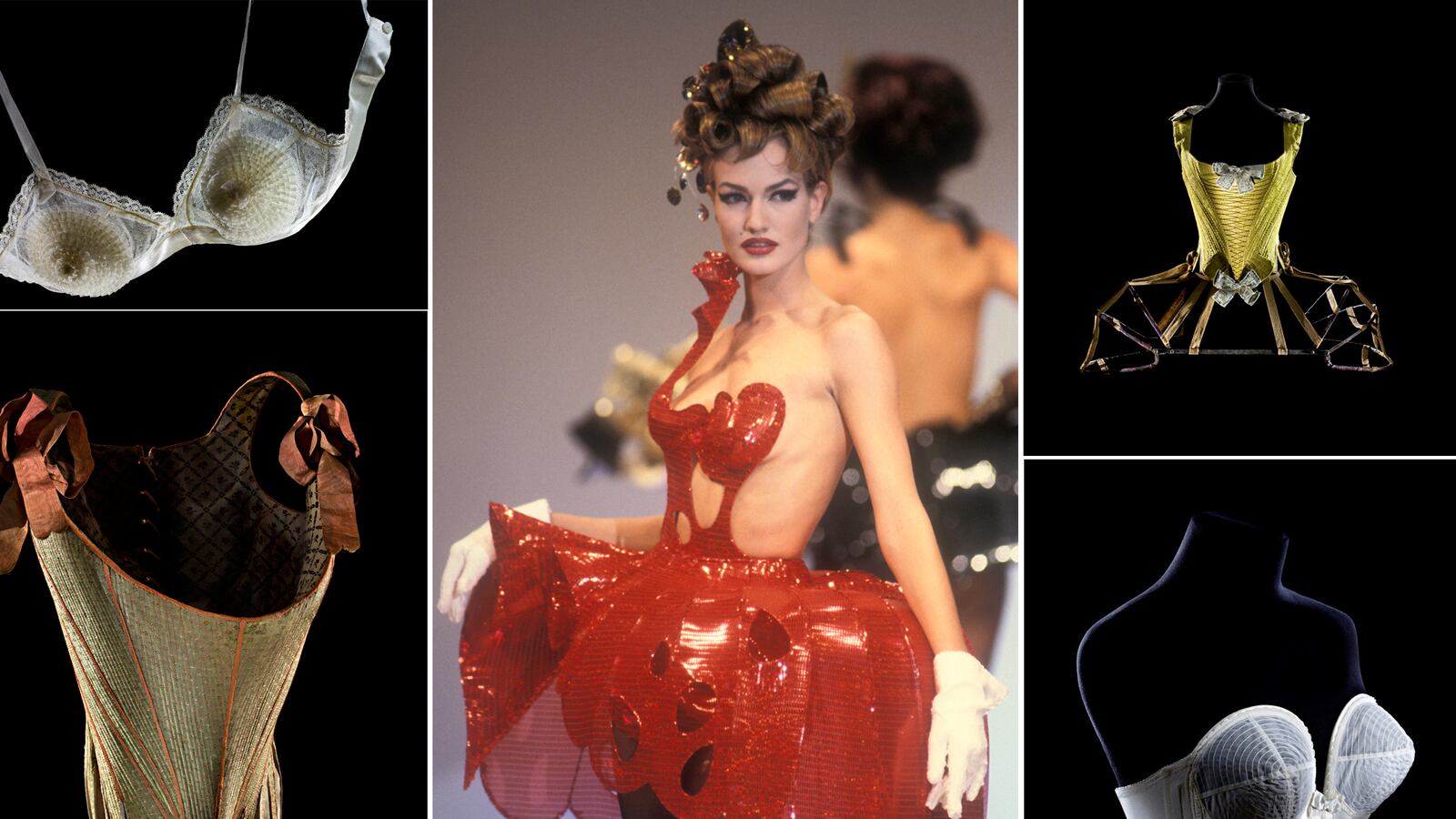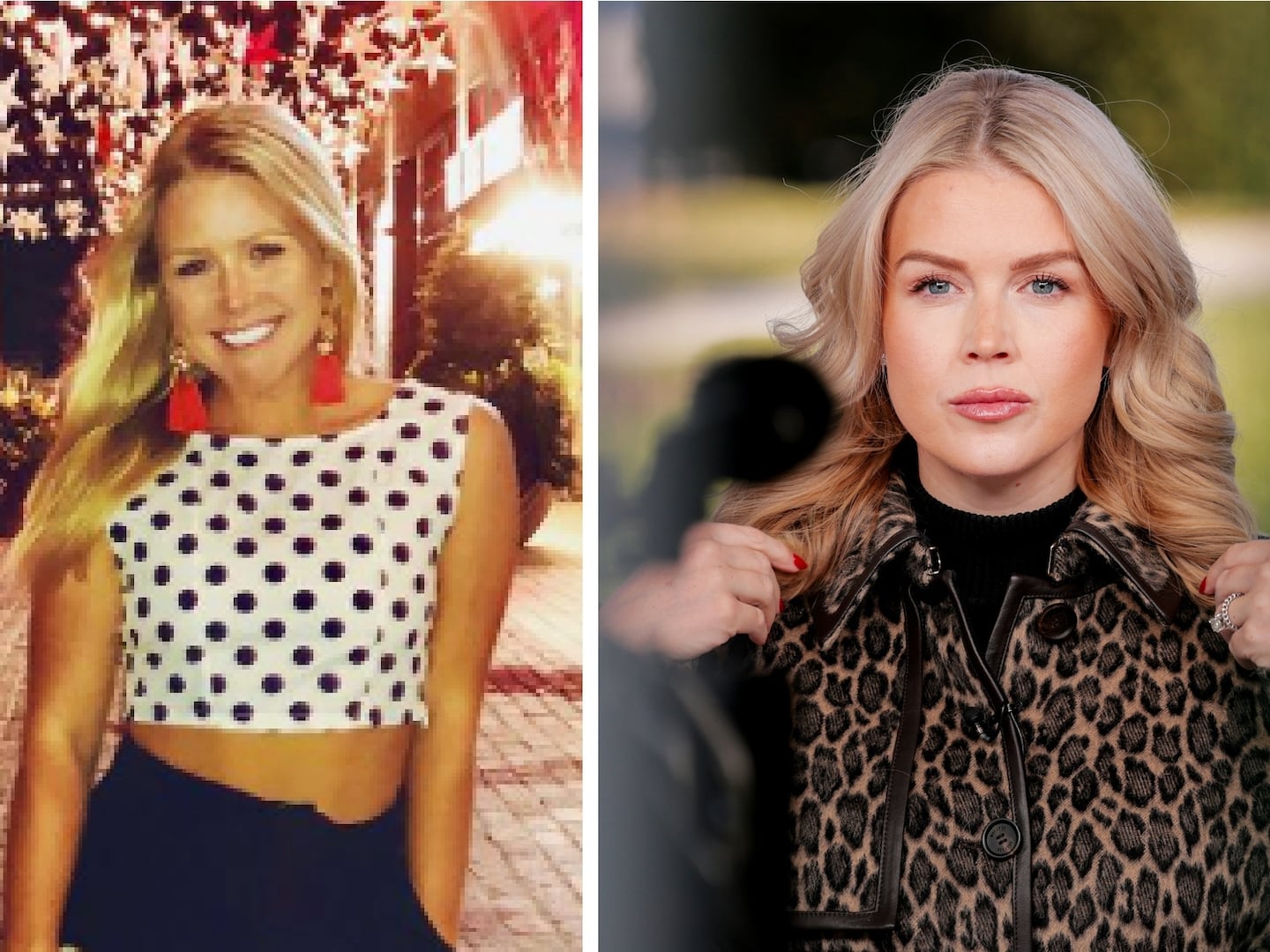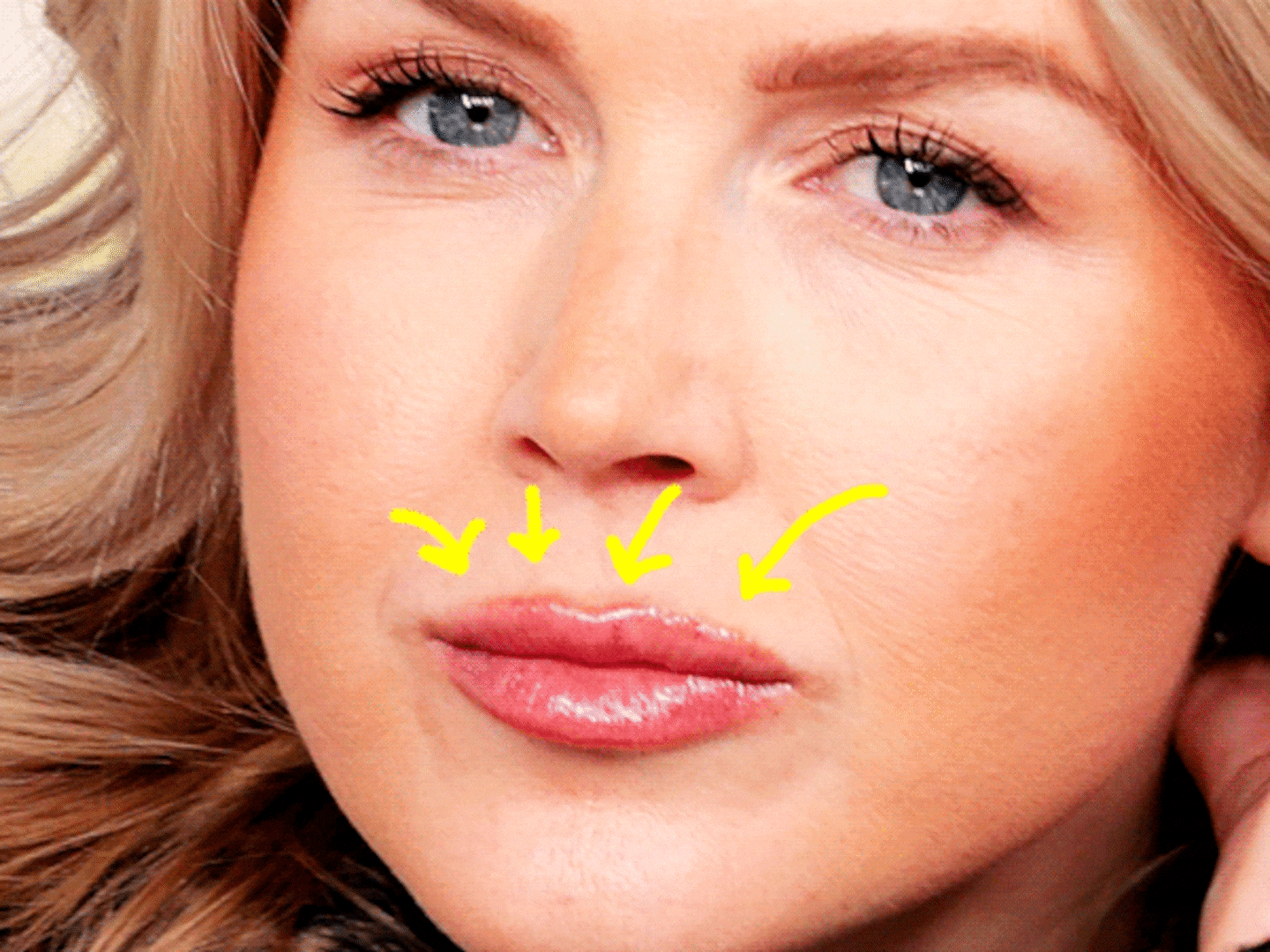
Behind the Seams: An Indiscreet Look at the Mechanics of Fashion, a new exhibition at Paris’s Musée des Arts Décoratifs, focuses on the history of undergarments and how the human form has changed through trends over the years. One may think of this as a chiefly contemporary issue—with women’s magazines endlessly evangelizing “your best body yet”—but the reality is that aspirational body reshaping is a centuries-old practice, with artificial techniques used as early as the 14th century.
The exhibition explores a concern that has gnawed at our psyches (and waists) for generations: how to best showcase the body in accordance with the prevailing norms of the time. The answer pivots around metamorphosis. This means constraining, rearranging, sealing off the body for the purpose of achieving tiny waists, raised buttocks, widened hips, and flattened stomachs. The nearly 200 items created to this end are displayed mostly chronologically, spanning crinolines, bustles, corsets, girdles, stomach-tucking belts, and push-up bras. There is an entire lingo unto itself to describe the instruments at work: boning, padding, hoops, lacing, hinges, pullbacks, waist-cinchers, springs, elastic fabrics.
Some interesting facts one learns over the course of the exhibit: the physical changes these pieces bestowed overtly denoted superior status, which is why aristocrats (and later the haute bourgeoisie) held them so dearly. Pregnant and breastfeeding women were still expected to wear corsets, with the only concession being more adjustable lacing. A 16th-century iron corset looks precisely as frightening and torturous as it sounds. The grander the occasion, the larger the width of the hoop petticoat. (Alternative terminology for “bustle” in French includes a faux-cul (fake backside) and queue d’écrevisse (crayfish tail)—both fancy idioms for saying more junk in the trunk.)
The exhibition space is exceedingly dark, with black walls, black carpet, and extremely low lighting. Scenographer Constance Guisset describes it as a “black box,” elaborating that she wanted visitors to focus “on the objects, and try to forget the space.” This absence of background is meant to create a kind of “magical atmosphere,” Guisset explains, with everything beyond the garments floating away. A dedicated space in which visitors can actually try on corsets and crinolines and the like, to get a “user experience” of these vestments, is the exception. There’s a definite sense of humor here that’s unlike the exhibit’s sobriety; this space is colorful and interactive, with mirrored walls and guaranteed laughs.
It wasn’t until the turn of the 20th century that the likes of Paul Poiret and Madeleine Vionnet provided a fresh take on the silhouette, with an emphasis on the natural line in swaths of loose fabrics. Complex underpinnings very slowly melted away into less and less constraining garments. Nowadays, contemporary designers integrate these former tropes into present-day collections with a wink. The exhibition highlights Christian Lacroix’s robe du soir with an exteriorized corset (1990–91), Vivienne Westwood’s prêt-à-porter tartan bustle (1994–95), both Alexander McQueen’s and Dolce & Gabbana’s respective robe-bustiers (2007).
Men are not exempt from the transformative nature of undergarments. Over time, virility manifested itself via quilted doublets to artificially puff out the chest, padded high socks to amplify the calves, and prominent codpieces created with stiff layers of fabric to bulge the, well, bulge. (These doorknob-sized codpieces are seen on a taffeta and silk-thread culotte circa 1550, and a full armor from the same period. It brings a whole new shade of meaning to the Renaissance man. One woman near me noted the immense disappointment such false advertising might cause: “Just imagine: you open up what’s behind it, and think… that’s it?!?”)
The exhibition ends with nine temporal mannequins arranged in timeline, illustrating how norms of beauty have changed. Overall, the show is a thorough, if exclusively Eurocentric, X-ray vision of fashion. Where it suffers is how little it has to say about what this evolution means, how the constraints of a woman’s movements through these items was as symbolic as it was physical. Women didn’t burn bras for nothing: these pieces are part of the political status of female identity.
(July 5 through November 24, 2013, Musée des Arts Décoratifs)






